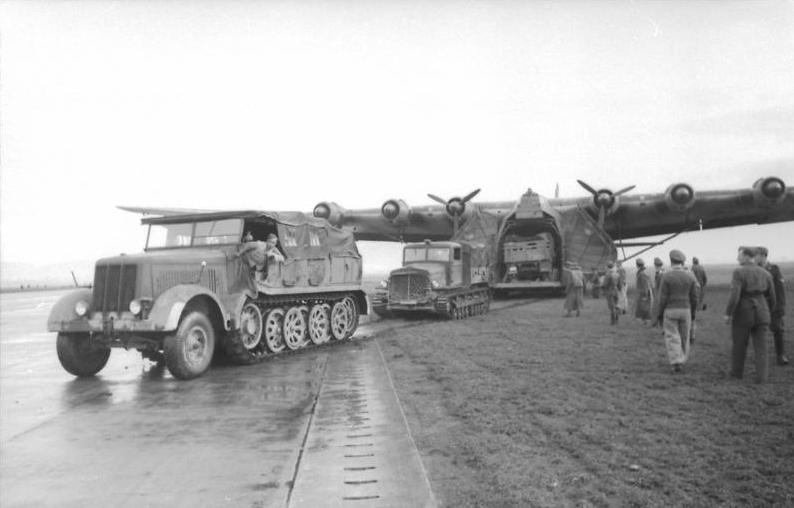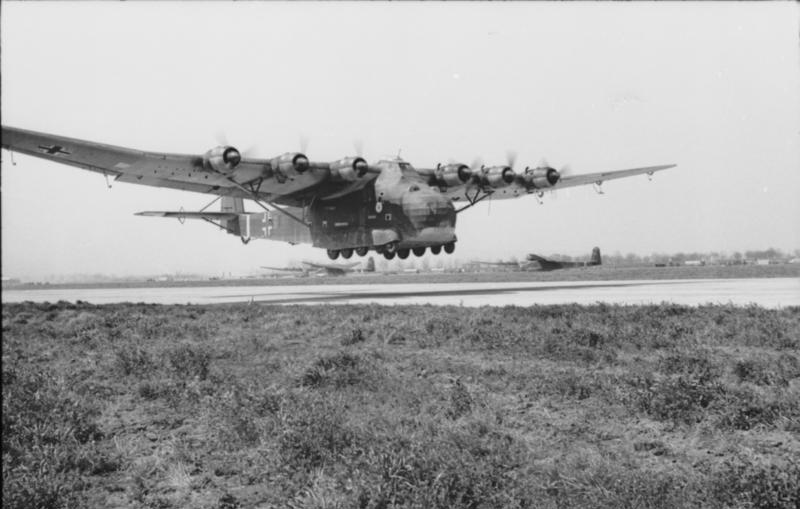Съобщение
Collapse
No announcement yet.
Любопитно
Collapse
X
-

Lockheed AQM-60 Kingfisher
The AQM-60 Kingfisher, originally designated XQ-5, was a target version of the USAF's X-7 test aircraft built by the Lockheed Corporation. The aircraft was designed by Kelly Johnson, the designer who later went on to create the SR-71 Blackbird and its relatives, such as the A-12 and YF-12.
The X-7's development began in 1946 after a request from the USAF for a Mach 3 unmanned test vehicle. This unmanned test craft eventually evolved into the Kingfisher when the need arose for a target to test anti-missile systems such as the SAM-A-7/MIM-3 Nike Ajax, SAM-A-25/MIM-14 Nike Hercules, and IM-99/CIM-10.
The Kingfisher was capable of evading the vast majority of weapons systems it was used to test, despite the systems being designed to destroy hypersonic missiles in flight. This created a significant amount of embarrassment at the USAF, resulting in considerable political fallout, which led to the eventual discontinuation of production in 1959 and the cancellation of the project entirely in the mid-1960s.
 War, war never changes..
War, war never changes..
Comment
-
discontinuation of production на какво? Hercules го хваща...:StrEagle написа Виж мнение
Lockheed AQM-60 Kingfisher
The AQM-60 Kingfisher, originally designated XQ-5, was a target version of the USAF's X-7 test aircraft built by the Lockheed Corporation. The aircraft was designed by Kelly Johnson, the designer who later went on to create the SR-71 Blackbird and its relatives, such as the A-12 and YF-12.
The X-7's development began in 1946 after a request from the USAF for a Mach 3 unmanned test vehicle. This unmanned test craft eventually evolved into the Kingfisher when the need arose for a target to test anti-missile systems such as the SAM-A-7/MIM-3 Nike Ajax, SAM-A-25/MIM-14 Nike Hercules, and IM-99/CIM-10.
The Kingfisher was capable of evading the vast majority of weapons systems it was used to test, despite the systems being designed to destroy hypersonic missiles in flight. This created a significant amount of embarrassment at the USAF, resulting in considerable political fallout, which led to the eventual discontinuation of production in 1959 and the cancellation of the project entirely in the mid-1960s.

"Я знаю, что после смерти на мою могилу нанесут кучу мусора. Но ветер Истории безжалостно развеет ее"
И. В. Сталин
Comment
-
Интересни снимки на Me 323 Gigant - най-големия транспортен самолет през ВСВ.

Такава комбинация не бях виждал - всъщност е логична, но изглежда забавно

А тези не че всичките излизат отвътре - първите две машини теглят натоварения самолет през летище в Тунис, 1942 г.
"Two big German Vehicles, Zgkw. 12t and a Praga T6-SS are pulling a loaded Giant on an airfield in Tunisia 1942""No beast so fierce but knows some touch of pity."
"But I know none, and therefore am no beast."
(Richard III - William Shakespeare)
Comment
-
Chinese stealth Chengdu J-20

The Chengdu J-20 is a Stealth, twin-engine fifth-generation fighter aircraft prototype being developed by Chengdu Aircraft Industry Group for the Chinese People’s Liberation Army Air Force(PLAAF). The J-20 made its first flight on 11 January 2011, and is expected to be operational in 2017–2019. China’s J-20 platform has the potential to be a capable, long-range strike system in the Asia-Pacific region, but a number of technical challenges will need to be overcome before production can begin.
Origins of the J-20 came from the J-XX program which was started in the late 1990s. A proposal from Chengdu Aircraft Industry Group, designated “Project 718”, had won the PLAAF endorsement following a 2008 competition against a Shenyang proposal that was reportedly even larger than the J-20. On 22 December 2010, the first J-20 prototype underwent high speed taxiing tests outside the Chengdu Aircraft Design Institute.
On 11 January 2011, the J-20 made its first flight, lasting about 15 minutes, with a Chengdu J-10S serving as the chase aircraft. After the successful flight, a ceremony was held, attended by the pilot, Li Gang, Chief Designer Yang Wei and General Li Andong (Deputy-Director of General Armaments).
On 17 April 2011, a second test flight of an hour and 20 minutes took place.On 5 May 2011, a 55-minute test flight was held that included retraction of the landing gear.
On 26 February 2012, a J-20 performed various low-altitude maneuvers. On 10 May 2012, a second prototype underwent high speed taxiing tests, and flight testing that began later that month. On 20 October 2012, photographs of a new prototype emerged, featuring a different radome, which was speculated to house an AESA radar.

On March 2013, images of the side weapon bays appeared, including a missile launch rail.
On 16 January 2014, a J-20 prototype was revealed, showing a new intake and stealth coating, as well as redesigned vertical stabilizers, and a system that appeared to be an Electro-Optical Targeting System. This particular aircraft numbered ‘2011’ performed its maiden flight on 1 March 2014 and is said to represent the initial pre-serial standard. Overall the year 2014 was quite a successful one and until the end of 2014 three more pre-serial prototypes were flown: number ‘2012’ on 26 July 2014, number ‘2013’ on 29 November 2014 and finally number ‘2015’ on 19 December 2014.
The J-20 has a long and wide fuselage, with the chiseled nose section and a frame-less canopy resembling that of the F-22 Raptor. Immediately behind the cockpit are low observable intakes. All-moving canard surfaces with pronounced Dihedral (aeronautics) are placed behind the intake ramps, followed by leading edge extensions merging into delta wing with forward-swept trailing edges. The aft section features twin, outward canted all-moving fins, short but deep ventral strakes, and conventional round engine nozzles. In one paper published on a Chinese aerodynamic journal, a designer of J-20 described high instability as an important design criterion for J-20. A canard is used to achieve sustained pitch authority at high angle of attack, as traditional tail-plane would start to lose effectiveness. This is because tail-plane would go into even higher angle-of-attack and stall, whereas canard can avoid this effect by deflecting to the same magnitude but opposite to the angle-of-attack.A canard configuration can also provide good supersonic performance, excellent supersonic and transonic turn performance, and improved short-field landing performance compared to the conventional design.

The same journal paper also explained how leading edge extensions and body lift are incorporated to enhance performance in a canard layout through interactions amongvortices. One graph shows the configuration to generate 1.2 times the lift of an ordinary canard delta, and 1.8 times more lift than a pure delta configuration of similar size. This allows the use of a smaller wing, reducing supersonic aerodynamic drag without compromising transonic lift-to-drag ratio characteristics that are crucial to the aircraft’s turn performance.
Engines
The production version of the J-20’s is speculated to be WS-15 a turbofan engine currently under development in the same class as American F-119. According to Global Security, the engine core, composed of high pressure compressors, the combustion chamber, and high pressure turbines were successfully tested in 2005. An image of the core appeared in the 2006 Zhuhai Air Show. Since 2012, China has reported numerous breakthroughs in development military turbofans and invested up to 20 billion US dollars in turbofan engine research and development. The J-20 has the potential to rival the F-22A Raptor in performance once appropriate engines become available.

Western analyst believe that the current prototypes are powered by WS-10 or the AL-31F engine. China is a large importer of Russian-made jet engines, prompting rumors that China seeks to obtain AL-41 117S engines for the initial production of J-20 through Su-35 purchases. However, these rumors have since been denied by China, and were proven as false. It was also reported that Russia approached China in an unsuccessful bid to sell 117S engines during the 2012 Zhuhai Air Show.
Avionics
The aircraft features a glass cockpit, with two main large color liquid crystal displays (LCD) situated side-by-side, three smaller auxiliary displays, and a wide-angle holographic head-up display (HUD).
A PLAAF Tupolev Tu-204 test bed aircraft was seen featuring a J-20 nose cone. It is believed to house the Type 1475 (KLJ-5) active electronically scanned array (AESA) radar with 1856 transmit/receive modules.
Prototype “2011” featured a revised nose section with elements resembling a IRST/EOTS system used to hunt low observable aircraft, and a metal finish that loosely reminds the radar absorbing Haze Paint first used on F-16s, and reportedly included sensor fusion technology.

Armament
The main weapon bay is capable of housing both short and long-range air-to-air missiles (AAM) (PL-9, PL-12C/D & PL-21).
Two smaller lateral weapon bays behind the air inlets are intended for short-range AAMs (PL-9). These bays allow closure of the bay doors prior to firing the missile, thus enhancing stealth.
No gun has yet been seen on any J-20 model and there have not been signs of provisions for one.

Stealth
Analysts noted that J-20’s nose and canopy use similar stealth shaping design as the F-22, yielding similar signature performance in a mature design at the front, while the aircraft’s side and axi-symmetric engine nozzles may expose the aircraft to radar. One prototype has been powered by WS-10G engines equipped with a different jagged-edge nozzles and tiles for greater stealth.
Others have raised doubts about the use of canards on a low-observable design, stating that canards would guarantee radar detection and a compromise of stealth.However, canards and low-observability are not mutually exclusive designs. Northrop Grumman’s proposal for the U.S Navy’s Advanced Tactical Fighter (ATF) incorporated canards on a stealthy air frame. Lockheed Martin employed canards on a stealth airframe for the Joint Advanced Strike Technology (JAST) program during early development before dropping them due to complications with aircraft carrier recovery. McDonnell Douglas and NASA’s X-36 featured canards and was considered to be extremely stealthy. Radar cross-section can be further reduced by controlling canard deflection through flight control software, as is done on the Eurofighter.
The diverterless supersonic inlet (DSI) enables an aircraft to reach Mach 2.0 with a simpler intake than traditionally required, and improves stealth performance by eliminating radar reflections between the diverter and the aircraft’s skin. Analysts have noted that the J-20 DSI reduces the need for application of radar absorbent materials.Additionally, the “bump” surface reduces the engine’s exposure to radar, significantly reducing a strong source of radar reflection.
Specifications
Data from Aviation Week & Space Technology
General characteristics
Crew: one (pilot)
Length: 20 m (66.8 ft)
Wingspan: 13 m (44.2 ft)
Height: 4.45 m (14 ft 7 in)
Wing area: 78 m2 (840 sq ft)
Empty weight: 19,391 kg (42,750 lb)
Gross weight: 32,092 kg (70,750 lb)
Max takeoff weight: 36,288 kg (80,001 lb) upper estimate
Fuel capacity: 25000 lb
Powerplant: 2 × Saturn AL-31F (prototype) or Xian WS-15 (production) afterburning turbofans, 76.18 kN (17,125 lbf) thrust each dry, 122.3 or 179.9 kN (27,500 or 40,450 lbf) with afterburner
Wing loading: 340 kg/m2 (69 lb/sq ft)
Thrust/weight: 0.94 (prototype with interim engines)
Armament
PL-10 SRAAM
PL-12 Medium Range AAM
sause: http://su-27flanker.com/2015/03/29/c...h-chengdu-j-20War, war never changes..
Comment














Comment